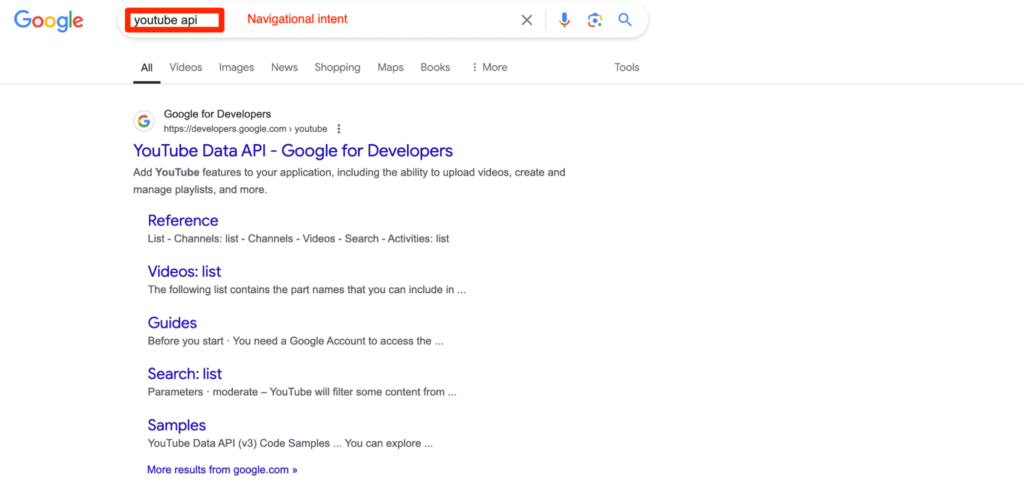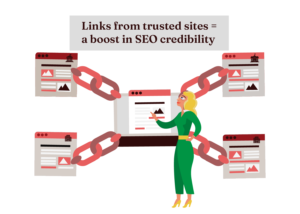Search intent isn’t just about the keywords people type into Google; it’s about understanding the reasoning behind those searches. When a person types a question or phrase into Google, they usually have a specific goal or need.
These goals vary. They might want to find out more about a topic, buy a product, or simply be looking for a specific website but can’t find the URL. Whatever the purpose, understanding the intent is particularly crucial for anyone in the SEO or content creation industry. It allows you to meet the needs of the audience.
I’ve been working in the SEO industry for over ten years and founded Aperitif Agency. Search intent has become one of the most fascinating aspects of our work. Getting inside the heads of your audience gives you the insight to predict their questions so you can then deliver exactly what they’re looking for.
It means you can create content that resonates, improve user satisfaction, and achieve better results online.
What is search intent and why is it important?
Search intent is the process of identifying the reason why someone is searching for a keyword in a search engine like Google.
Often a keyword can have multiple reasons why someone is searching for something in a search engine — and this is called mixed search intent, keywords that have more than one reason why a person might be searching for something.
Search intent is really important for the investigative stage of the content creation process as it can impact what kinds of keywords you target. It also directly impacts the way that a content brief is created because a piece of content needs to match search intent.
The 4 main types of search intent
Understanding search intent is like having a cheat sheet for producing content that appeals to your audience. When you know what users are looking for, you can write articles, guides, and product pages tailored directly to those needs.
This leads to higher engagement and customer satisfaction. It also means better search engine rankings, as search engines reward content that meets user intent.
That said, here are the four main types of search intent and how to use them effectively.
1. Informational intent
Informational intent is when users want to learn more about a topic or find an answer to a specific question. These users are in their search journey’s early stages and often seek broad information.
Here’s an example that I just made to illustrate this in greater detail:
User goals and characteristics: Users with informational intent usually seek to gain knowledge or understand a concept. They’re not yet ready to purchase or take any specific action. They just want information.
Keyword examples: Common keywords include “how to,” “what is,” “guide to,” and “tips for.” For instance, searches like “how to improve search engine optimisation” or “what is core web vitals” fall under informational intent.
Content formats
To cater to informational intent, your content should be educational and detailed. Ideal formats include:
- Articles and blog posts.
- How-to guides.
- FAQs.
- Tutorials.
- Comprehensive lists and tips.
2. Navigational intent
Navigational intent is when users try to find a specific website or page. They already know where they want to go but need help getting there.
Here’s an example that I just created of a user wanting to navigate to YouTube’s API page specifically:
User goals and characteristics: These users have a clear destination in mind. They might type a brand name, a website URL, or a product name directly into the search bar.
Keyword examples: Keywords often include brand names or specific website names, like “Facebook login,” “YouTube,” or “Ahrefs blog.”
How to optimise
To optimise for navigational intent:
- Ensure your website structure is clear and intuitive.
- Use internal linking to guide users to important pages.
- Ensure your site appears in search engine result pages (SERPs) for your brand name.
3. Commercial intent
Commercial intent (also known as commercial investigation) occurs when users are considering a purchase but are still conducting research.
Here’s an example that I just created for somebody that’s hungry (like me) and they’re looking for a good place to eat in Melbourne’s CBD area:
User goals and characteristics: These users are looking to compare products, read reviews, and find the best options available before making a decision. They’re further along in the buying journey but not ready to pull the trigger.
Keyword examples: Keywords include phrases like “best,” “reviews,” “top,” and “comparison.” Some examples are: “best SEO tools,” “iPhone vs Samsung,” and “top laptops 2024.”
Content formats
Content that caters to commercial intent includes:
- Product comparisons.
- Reviews.
- Buying guides.
- Case studies and testimonials.
4. Transactional intent
Transactional intent is when users are ready to make a purchase or take a specific action, like signing up for a newsletter.
Here’s an example that I just created for someone who’s looking to buy an iPad with a keyboard:
User goals and characteristics: These users are at the final stage of their search journey. They’ve done their research and are now looking to convert.
Keyword examples: Keywords often include terms like “buy,” “order,” “purchase,” and “discount.” Examples are “buy Nike shoes,” “order pizza online,” and “purchase Adobe Photoshop.”
How to optimise
To tailor to transactional intent:
- Use clear calls to action (CTAs).
- Ensure your checkout process is secure and user-friendly.
- Provide detailed product descriptions and customer reviews.
- Optimise your landing pages to facilitate conversions.
How do you determine search intent?
Working out search intent involves a bit of detective work to understand what users are looking for and why. Here are some effective strategies to help you get a clear picture of user intent and create relevant content.
Analyse user search queries and behaviour
Start by looking at the actual search queries people use. Tools like Google Analytics can offer insights into what search terms bring users to your site.
Pay attention to the words and phrases they use, as these can give you a good idea of their user search intent. Are they asking questions, looking for specific products, or browsing for information?
Consider the marketing funnel and user journey
Think about where the user is in their journey. Are they at the top of the funnel, just gathering information (informational intent)?
Or are they closer to making a decision (transactional intent)? Mapping out the marketing funnel can help you understand how different user intents fit into your overall strategy.
Utilise SEO tools for keyword research and search intent analysis
Use SEO tools like Ahrefs, Semrush, and Moz to identify intent keyword groups and understand what kind of content performs best for those keywords.
They provide data on search volume and keyword competitiveness and even suggest related keywords, making creating content that matches user intent easier.
For example, if I use Semrush’s Keyword Magic Tool and enter a keyword like “best pizza restaurant Melbourne,” it will show the search intent.
Examine top-ranking content for specific keywords
Look at the top-ranking pages for your target keywords. What type of content do they offer? Are they detailed guides, product pages, or comparative reviews?
Look at what’s already performing well; you can gain insights into what people expect from their searches. This also helps you create relevant content and improves your chance of appearing on top result pages.
Common challenges with identifying search intent
Identifying search intent can be tricky, even for seasoned marketers. Here are some common challenges and how you might tackle them.
1. Addressing ambiguity in search queries
Sometimes, search queries are just plain confusing. For example, a search for “apple” could refer to the fruit, the tech giant, or even the record label. To tackle this, you want to analyse the context of the query and look at related keywords.
Tools like Google Analytics can provide insights into what people searching for these terms usually click on, allowing you to create more content that aligns with their intentions.
2. Dealing with mixed search intent
A single query might have many intents. For example, someone searching for “best laptops” might be looking to buy (transactional intent), comparing options (commercial intent), or seeking reviews (informational intent). To get past this, create content that suits all needs. In other words, include product comparisons, reviews and buying guides in one article.
3. Staying updated with evolving search engine algorithms
Search engines are always updating their algorithms, which can impact how they interpret search intent. Keeping up with these changes is essential. Follow industry news, attend webinars, or participate in forums to stay informed. Knowledge is key.
4. Bridging content gaps
Sometimes, there’s a content gap between what people seek and what’s available online. Thorough keyword research can help identify these gaps. Creating content for search intent that fills these voids can attract more organic search traffic and stand out from the competition.
Summing up
Aligning pages on your website with search intent makes sense. It’s what your users and customers want, but also Google. The better you understand the intent behind search queries, the more relevant your content will be.
Need help with SEO? Then get in touch with our SEO agency today to find out why brands love working with our friendly expert team.










